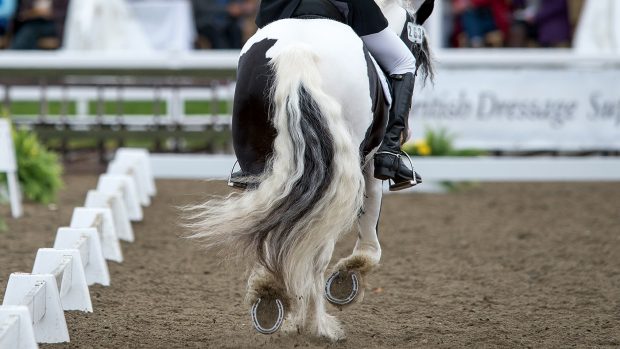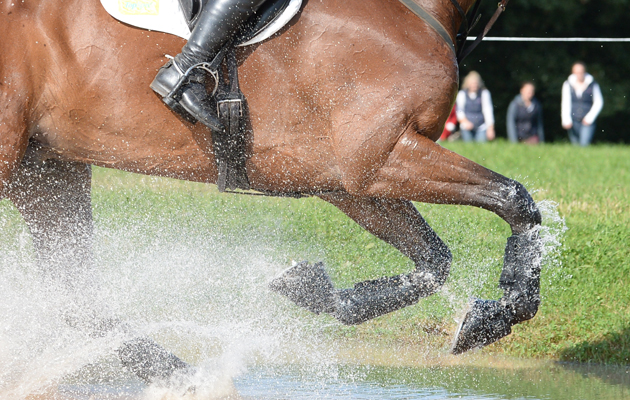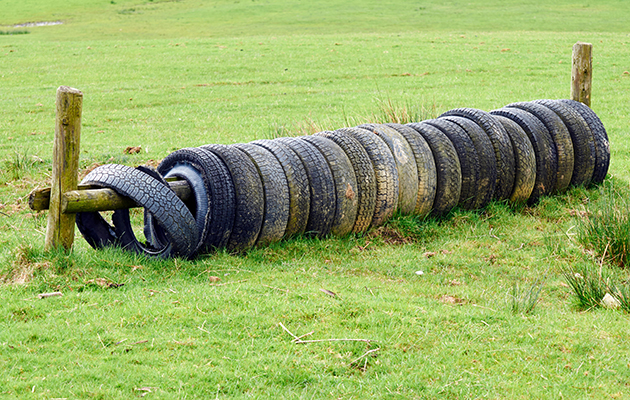Do you seem to find yourself more often than not, taking off too early or perhaps getting too close to a fence?
Here’s some helpful pointers from Irish international showjumper, David Simpson (pictured), who trained and produced young horses for Shane Breen for seven years, won the Queen’s Cup at Hickstead in 2016 and the Olympia Puissance in 2014.
- The most important thing is a good canter — if you don’t have this, it makes it harder to achieve a good distance and then a good jump
- You must have control in the canter from the turn — you need to be able to adjust the canter easily either shortening or extending the stride, which comes from a plenty of flatwork practice
- A relaxed horse and rider is key — a lot of riders get nervous about achieving the perfect distance and pass this feeling on to the horse, leading to an erratic canter and making it harder to execute.
- Always look early on to where you are going — your eye will naturally put you roughly at a good distance so trust what you are looking at.
- Ride a correct corner, which should be as close to a right angle as possible — if you cut this, you will end up closer than you planned from the turn and likewise if you overshoot the turn you will end up further away or being forced to add in an extra stride.
- Be confident in what you are doing. Remember a horse’s stride is only four yards long, so even if you are the worst possible distance you are only two yards away from the perfect one. Normally you turn with a maximum of 16 yards from the take-off, so even if your flatwork isn’t strong, it should be possible to add or remove those two yards.
A useful exercise to try
David says: “A good simple exercise to help with this is to set up two poles on the ground 24 yards apart, which should be a slightly forward five strides. Come through this on both reins twice on five strides, then come round on each rein on six strides. Count in your head and be strict with yourself. This will teach your horse how to be adjustable and train yourself as a rider to trust your natural eye and be confident in what you see.”
Now you’ve got that advice in mind, take a look at these showjumping competitions available to enter where you can showcase seeing the perfect stride…
Nervous & novice unaffiliated showjumping
Date: 7 March
Venue: Milton Equestrian Centre, Worksop
Details: “This event has classes ranging between 35cm and 95cm with junior and senior sections.”
Enter now
British Showjumping
Date: 7-8 March
Venue: Muirmill Equestrian Centre, Kilmarnock
Details: “This show features a range of classes from 90cm to 1.30m.”
Enter now
Unaffiliated showjumping
Date: 8 March
Venue: Fenland Equestrian Centre, Wisbech
Details: “This event has classes from 40cm up to 1.10m.”
Enter now
Unaffiliated showjumping
Date: 14 March
Venue: Rein and Shine Equestrian Centre, near Swindon
Details: “This show has classes ranging from 30-35cm up to 1m.”
Enter now
British Showjumping
Date: 18 March
Venue: Keysoe, Bedford
Details: “This event has classes from 90cm up to 1.40m.”
Enter now
Visit equo.co.uk for full competition and training listings
Would you like to read Horse & Hound’s independent journalism without any adverts? Join Horse & Hound Plus today and you can read all articles on HorseandHound.co.uk completely ad-free.




